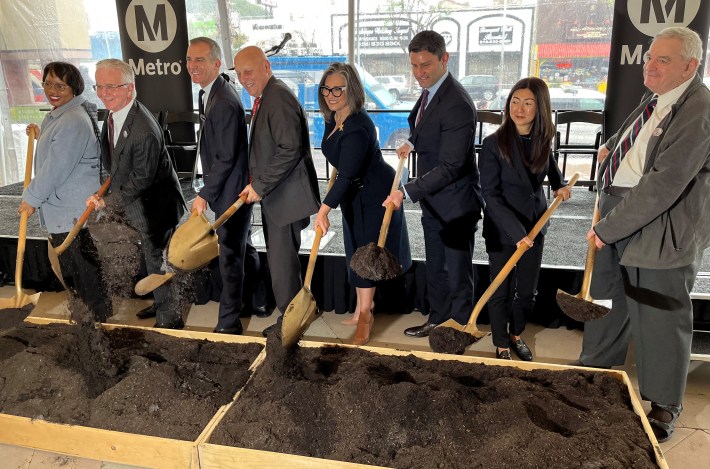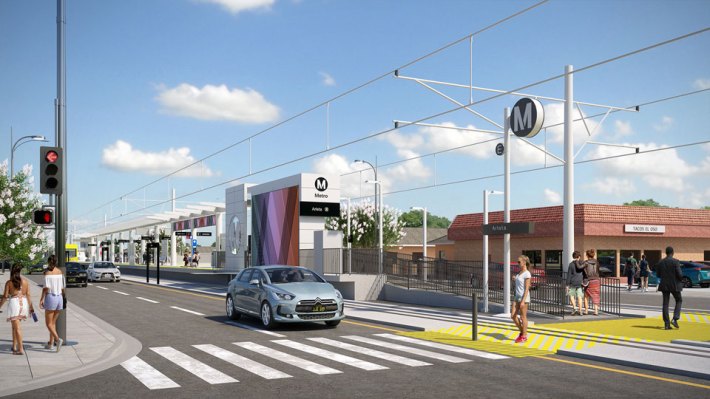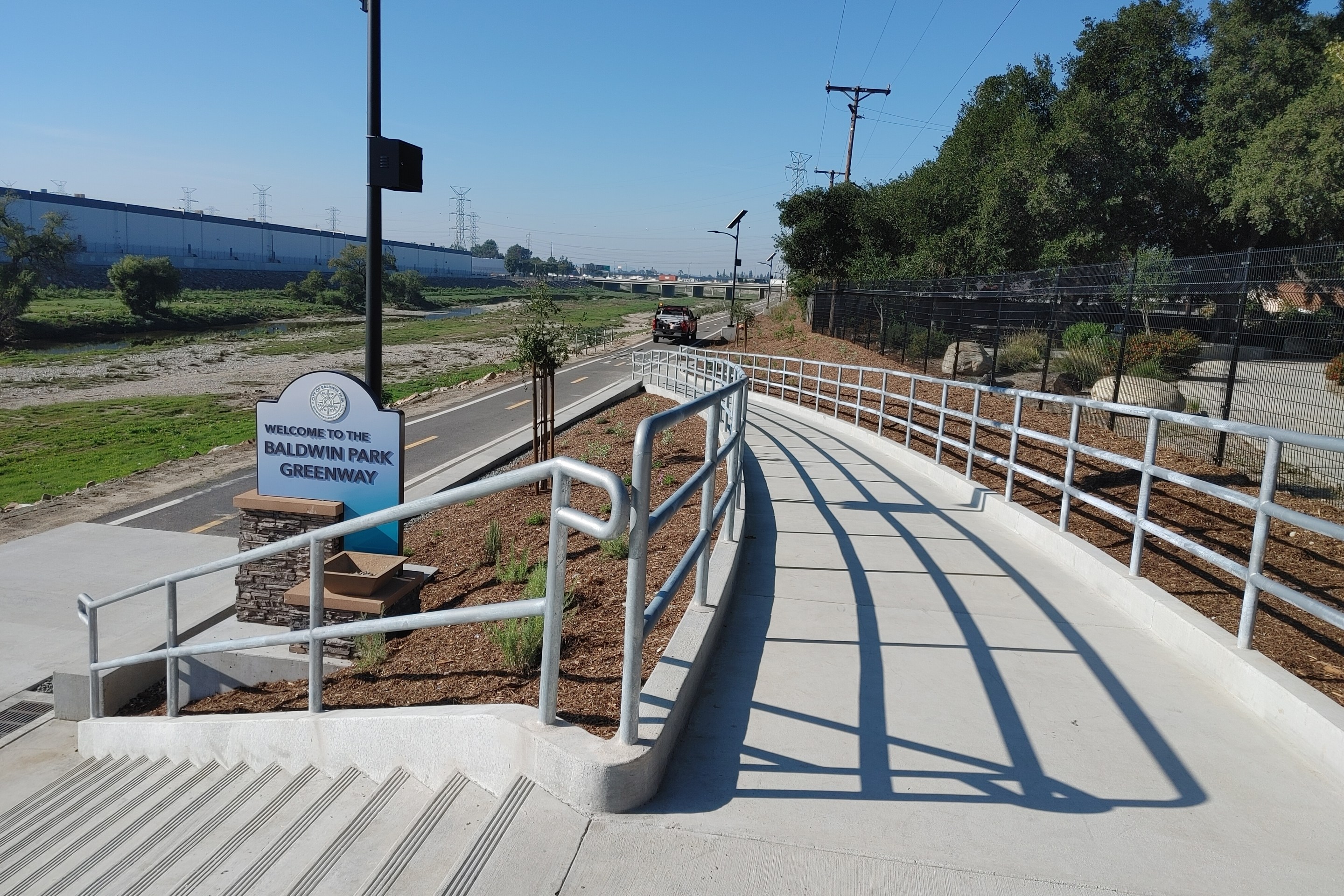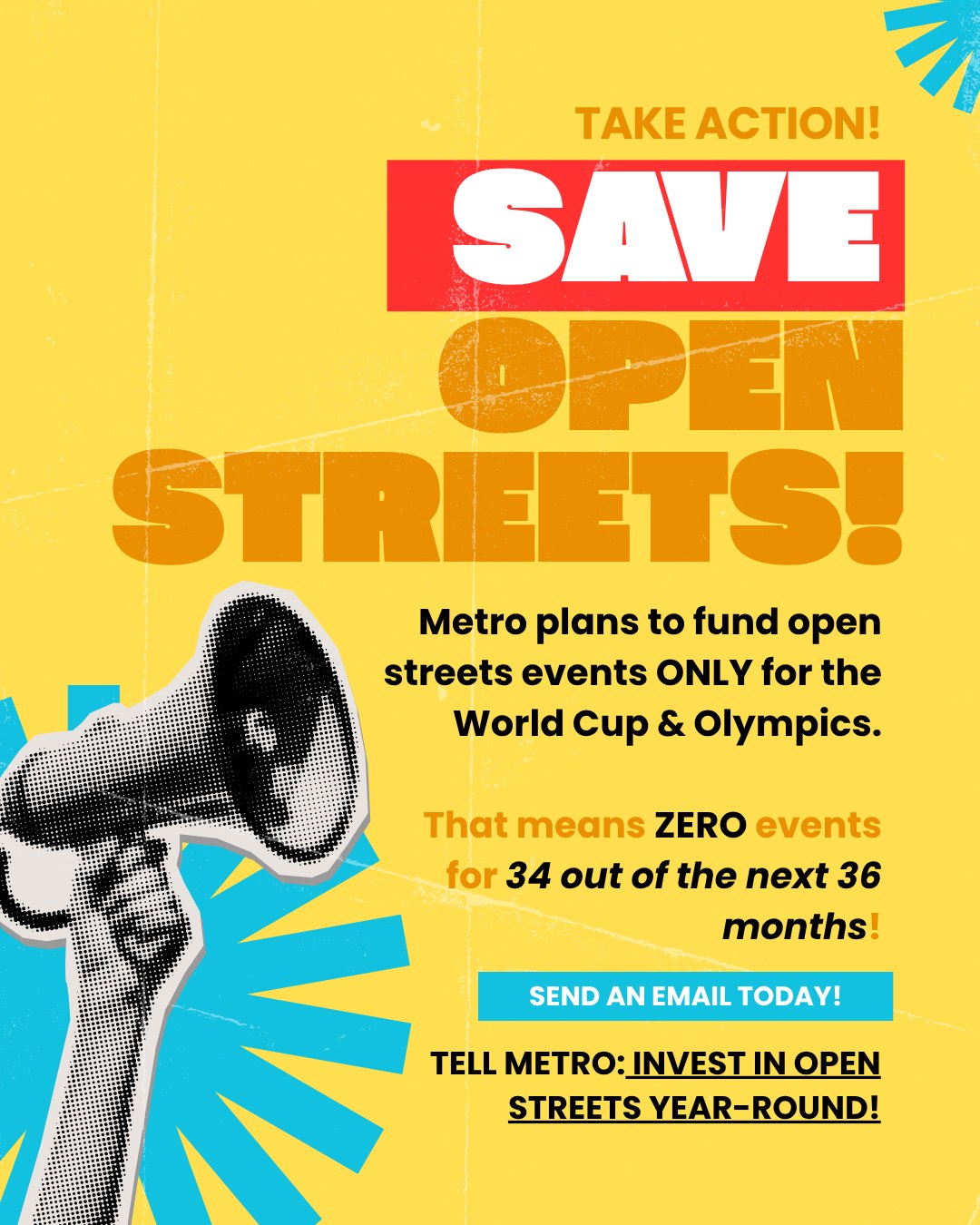This morning Metro broke ground on an early utility relocation phase for planned light rail running in the middle of Van Nuys Boulevard.
Metro Board Chair Ara Najarian praised Metro's East San Fernando Valley Transit Corridor project for connecting to Metrolink stations, jobs, and homes - and improving Valley residents' quality of life.
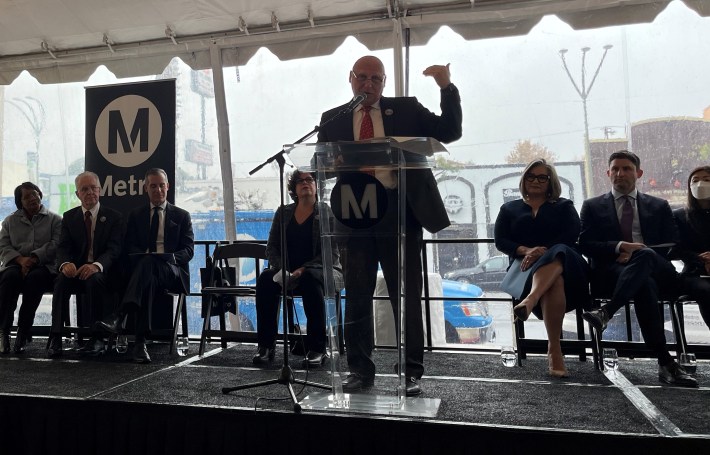
The initial phase (Southern Segment) of the ESFV rail project will be a 6.7-mile ~$2 billion ~$3.6 billion light rail line, with 11 new stations. The line will be located in the middle of Van Nuys Boulevard, extending north from the Van Nuys G Line Station, to the Van Nuys Metrolink, and initially ending at San Fernando Road. It will serve the city of L.A. communities of Van Nuys, Panorama City, Arleta, and Pacoima.
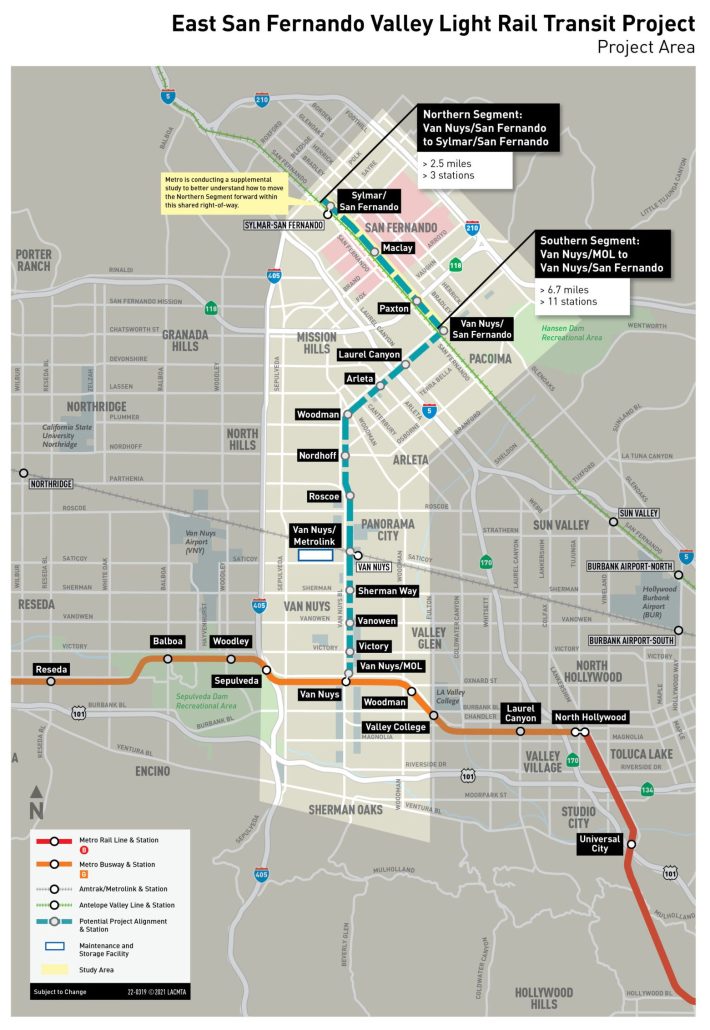
A second phase (Northern Segment) will continue north along the Metrolink Antelope Valley Line, connecting to it at the Sylmar/San Fernando station.
L.A. City Council President Paul Krekorian told of how his 91-year-old mother still speaks fondly of having ridden the streetcar, boarding "right here on Van Nuys [Boulevard]." Krekorian noted that, 70 years ago, Southern California dismantled "the leading transit system in the world" and that "since then, the San Fernando Valley [had] become the stereotype of the car culture... the most car-centric part of a car-centric city." Krekorian praised the ESFV groundbreaking as an incredible historic moment to "bring rail transit back to the San Fernando Valley."
Metro's CEO Stephanie Wiggins noted that the rail project is entering a new phase on its journey, but that "full scale [construction] work won't commence for a while." Metro does not currently have the full funding secured for the project's initial phase (more on funding below), so today's event kicked off just a "pre-construction" $9 million utility relocation phase.
Many speakers - Wiggins, Krekorian, Mayor Eric Garcetti, Assemblymember Jesse Gabriel - touched on the theme of the Valley not getting its "fair share of transportation resources" from Metro. (Metro has spent billions widening freeways there: $1.6 billion for the 405, and $1.3 billion and climbing for the 5, but that's another story.) East San Fernando Valley rail does represent the first modern light rail line in the Valley, and the first new Metro rail since the agency opened two B (Red) Line subway stations back in 2000. Valley neighbors fought against rail in the Chandler right-of-way, so Metro ended up building its G Line Bus Rapid Transit. Metro has numerous transit improvements scheduled for the Valley: Sepulveda Pass rail (opposed by some Valley leaders), G Line conversion to light rail, new Bus Rapid Transit (opposed by some Valley leaders), and several bus lane upgrades (opposed by some Valley leaders).
ESFV is largely funded through Metro's Measure M sales tax. In May, the project received a $908.75 million Federal Transit Administration grant through the FTA’s Expedited Project Delivery Pilot Program.
Funding for the ESFV rail line was a point of contention at yesterday's Metro board meeting. The state of California saw a significant budget surplus last year, and has programmed some extra funding for building transit. Metro anticipates potentially securing more than a billion dollars through a special round of state TIRCP (Transit and Intercity Rail Capital Program) grants. Various parts of L.A. County made the case that their projects deserved priority in Metro's TIRCP grant application. Ultimately the board supported staff's recommendation for the following three rail projects, in this priority order:
- ESFV - $600 million requested
- Foothill L (Gold) Line Extension from Pomona to Montclair - $798 million requested
- West Santa Ana Branch - $500 million requested
Metro anticipates that the ESFV project will be fully funded in early 2023, at which time the agency would award the main construction contract. The rail line is anticipated to open around 2028-2030.
For more on today's groundbreaking, see The Source.
